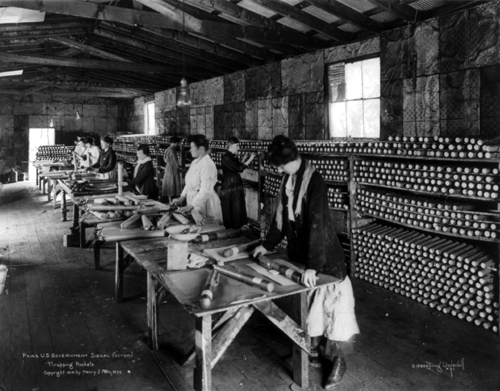Most feminists of the era supported the court’s decision. Its overturn in 1923 under Chief Justice Taft allowed women to work as long as men. This was viewed as a major step backward for women's rights.
The catch is you have to hand your boss a bloody pair of underwear. Other than that, menstrual leave is a shimmering display of perks: doesn’t detract from sick days or vacation time, is available up to three days every month, and (most importantly) it's paid leave. Forget the jelly-of-the-month club. Forget the bonus. I want paid menstrual leave.
It’s already a practice in countries like Japan, Korea, and the Philippines (where yes, some employers require evidence that the woman has begun menstruating, such as bloodied undergarments). The logic tends to be that periods are a part of a woman’s body that can cause pain, and when this occurs the worker, her work environment, and the work she produces would increase in quality with a few days of rest in times of physical stress. Menstrual leave is treated similarly to maternity leave, in theory.
But this is a system that removes a woman from the work environment for “health” reasons exclusively linked to her existence as a female. It’s the battle between ability and integrity girls fight from the time they can do anything and be potentially out-done by boys. Run faster, throw harder...the cliché suburban backyard activities that become rivalries as soon as more than one sex is involved. Equalling or surpassing boys is no problem in the pigtail days, until that pesky process called puberty gives little Alex next door tight biceps like stolen fruit. The girls are left with flimsy training bras and what should be an alarming case of chronic hemorrhaging and the realization that God really did screw them over after all.
So how do we maintain professional equality (if we had it in the first place) when the biology of male and female bodies are inherently unequal? Feminist critics of paid menstrual leave point out that the practice reinstates stigmas and stereotypes of women, the idea that a woman needs to be taken care of like some delicate garment tossed in the wash. Most women neither want nor need menstrual leave.
I'm not one of these women. In fact, I'm the kind of women the others would avoid in the break room and I'd be forced to eat my bologna and cheddar sandwich in the mop closet with a fatherly and friendly custodian instead. I both want paid menstrual leave and have a medical history that supports this desire as an arguable necessity. The practice of paid menstrual leave probably won't be adopted in the US within my lifetime. There will be days that I go to work when I probably shouldn't, since my drugs are the ones teens use to get high and I technically shouldn't "operate machinery," which I'm only 86% sure includes driving a motor vehicle. I won't take time off work and I won't ask for it, because every time I brings memories of the middle school days, when the nurse refused to recognize my doctor’s notes and the days I missed for period pain were marked as unexcused absences. She said it was impossible to give a free pass to every girl having a bad day. If I had been quicker—maybe a bit more bold—I might have mentioned that not every girl was asking for one.
I'm not one of these women. In fact, I'm the kind of women the others would avoid in the break room and I'd be forced to eat my bologna and cheddar sandwich in the mop closet with a fatherly and friendly custodian instead. I both want paid menstrual leave and have a medical history that supports this desire as an arguable necessity. The practice of paid menstrual leave probably won't be adopted in the US within my lifetime. There will be days that I go to work when I probably shouldn't, since my drugs are the ones teens use to get high and I technically shouldn't "operate machinery," which I'm only 86% sure includes driving a motor vehicle. I won't take time off work and I won't ask for it, because every time I brings memories of the middle school days, when the nurse refused to recognize my doctor’s notes and the days I missed for period pain were marked as unexcused absences. She said it was impossible to give a free pass to every girl having a bad day. If I had been quicker—maybe a bit more bold—I might have mentioned that not every girl was asking for one.
